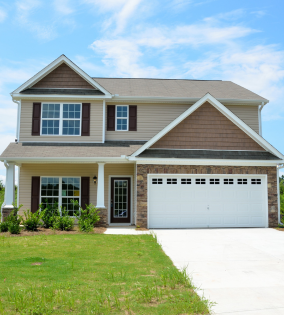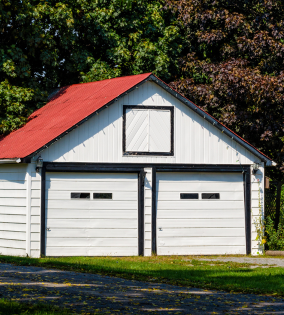- Home
- Government
- Departments
- Planning & Development
- Development & Building Permits
- Residential Development
Residential Development
New Dwelling for a Single Family
Any building to be used as a dwelling requires a development permit. This means any building that contains a kitchen, sleeping areas, and a bathroom, and is capable of year-round occupancy. For additional clarity, buildings referred to as “cabin”, “cottage”, “lake house”, etc. that meet the above description are considered a dwelling.
Types of dwellings include:
- Detached Dwelling – House constructed on site.
- Moved in Dwelling – House moved from another site.
- Mobile Dwelling – Mobile home constructed and certified in accordance with the CSA-Z240 standards for foundations such as blocking and steel piles with an enclosed and insulated joist space.
- Modular Dwelling – Factory constructed home with modular parts assembled on or transported to a site. Home has CSA-A277 certification as a ‘Modular’ and cannot be built to CSA-Z240 standards and must be set on a subgrade foundation, such as a grade beam, with a heated crawl space or basement.
Residential Accessory Buildings
An accessory building is one that is separated from the main building on a property, in this case a dwelling. If the accessory building is less than 108 ft² (10 m²) in size and meets the setback requirements of the zoning district, a development permit is not required. In all other cases, a development permit is required. For further clarity, any accessory building 108 ft² (10 m²) or larger, with or without a permanent foundation (ie. on skids), requires a development permit.
Typical Accessory Buildings include but are not limited to:
- Garages
- Sheds
- Shops
- Gazebos
- Sea can containers
- Where can I get/submit a development permit application?
-
Development Permit applications can be obtained and then submitted three ways:
- By email – request an application or submit the application to wpermits.
- The County office - 243019A Highway 13 (southside of Highway 13 across from Reynolds Alberta Museum entrance)
- By regular mail - Box 6960, Wetaskiwin, AB T9A 2G5
Planning and Development Applications
- What do I need to submit with my development permit application?
-
The required documents may vary depending on what the proposed development is; however, majority of development permit applications require:
- Completed development permit application form,
- Drawings (blueprints),
- Floor plan,
- CSA Certification for all Mobile and Modular Homes,
- Site plan, and
- All application fee(s) to be paid in full.
Applications are NOT considered complete until ALL of the required information and fees have been provided. An incomplete application form and/or illegible supporting information may result in the application being returned to the applicant. Please refer to the checklist on the back of the application. Fees will be determined after application is considered complete.
Click here to contact the Planning and Development department for any questions regarding the application or application process.
Site Plan Example:
Examples of drawings/measurements required:
ShedGarage House - What is a site plan?
-
A site plan is a detailed, dimensional plan/drawing showing all buildings/structures on a site and their distance to:
- Property lines
- Pipelines/Well Heads
- Bank breaks
All setbacks are required to be measured from the property line, not from the road or center of the road. The site plan should also show the square footage of all buildings, and where access into the parcel is (driveway/approach).
Site Plan Example
Other Types of Residential Development:
Development Not Requiring a Development Permit
An agricultural (farm) building does not require a development permit, if it meets the setback requirements of the zoning district the land is located and is not in the Agricultural/Intermunicipal Development Plan (A/ID) District around the City of Wetaskiwin.
Types of Agricultural (farm) buildings include but are not limited to:
- Livestock Shelters
- Barns and outbuildings storing agricultural products and farm equipment
- Silos
- Granaries
Developments on a Farm Requiring a Development Permit
- Dwelling units ie. House, mobile home, modular home, etc. [Link to Residential webpage]
- Residential accessory buildings i.e. Garage, Shed, Gazebo, etc. [Link to Residential webpage]
- Discretionary uses under the applicable agricultural zoning district
- Farm buildings within the City and County of Wetaskiwin Intermunicipal Development Plan
Find out the Zoning of your property and applicable setback regulations
To confirm the zoning of your property, you may access an online digital County map to view the entire County, including your specific property. Once you find your property on the map, click on it and a pop-up window will display a host of information including the zoning of the parcel, lot area, etc. You can click on the zoning code to see the regulations for the zoning district including the setbacks required for buildings from the front, sides and rear property lines, and height. The mapping system also includes a measuring tool so you can measure setbacks on your property to confirm the proposed location of the building will meet the setback requirements. Further information on how to use the interactive map can be found here.
Guest Cabin
The County will consider a Development Permit application for a Guest Cabin in the following zoning districts:
- Lakeshore Residential District (LR) – requires existing house on property
- Mixed Recreational Residential District (MRR) – requires existing house on property
- Wizard Lake Watershed District (WLW)
According to the Land Use Bylaw, a Guest Cabin shall not exceed 29.7 m² (320 ft²) and can only be used for sleeping accommodations with a maximum of six (6) beds. Further, a Guest Cabin shall not contain a kitchen facility, bathroom or washroom facility and the maximum occupancy shall not exceed 240 days in one calendar year. Sleeping accommodation attached to or above a garage or another accessory building may be deemed to be a Guest Cabin.
Within certain districts, a secondary suite can be used as an additional self-contained house on a property, and may be located within a portion of the main house, inside an accessory building, or as its own separate building. A secondary suite shall not consist of the following:
- Recreational Unit (RV)
- Park Model
- Mobile Home
- Building/Structure designed to be transported from one site to another (i.e. ATCO trailer, sea-can, building on skids, etc.)
Per the Land Use Bylaw, a secondary suite shall:
- Be limited to one (1) per property;
- Not be subdivided for the purpose of separating a title for a secondary suite. The restriction of subdivision shall be fundamental to the secondary suite use;
- Have a maximum floor area of:
- 80 m² (861.11 ft²) within the Urban Residential (UR) and
Lakeshore Residential (LR) districts; or, - 115 m² (1238 ft²) outside the Urban Residential (UR) and
Lakeshore Residential (LR) districts;
- 80 m² (861.11 ft²) within the Urban Residential (UR) and
- Comply with all applicable Alberta Safety Codes and any other applicable Municipal and Provincial regulations;
Be provided with off-street parking and not interfere with on-street or adjacent landowners parking; and
Where applicable, not be considered in the maximum density described for the neighbourhood in which it is located or the number of dwellings on a lot.
Secondary suite is a discretionary use and requires a completed Development Permit.
Temporary Full Time Care Dwelling
A Development Permit may be approved for a second dwelling (house) on a parcel for a person(s) needing full-time care provided by the residents of the existing dwelling on the property. The following regulations apply:
- The care home must be a Mobile Home
- Dwelling, Mobile must be a listed use in the zoning district for the property
- The Mobile Home shall only be used by a person(s) who require(s) full-time care being provided by the primary resident of the property
- Written confirmation from a physician recommending the required on-site care
- The Mobile Home shall be removed when it is no longer being used for care purposes or upon the expiry date as stated in the development permit conditions
Notwithstanding the above, a second dwelling for care purposes is not allowed in following districts:
- Lakeshore Residential District
- Lakeshore Mixed Use District
- Recreational Resort Holdings District
- Mixed Recreational Residential District
- Urban Residential District
- Country Residential District, in a Multi-Lot Residential Subdivision
- What is an Off-Site Sewer Levy and why do I have to pay it?
-
Council passed Off-Site Bylaws 2007/38 and 2008/42, requiring any new or redevelopment of a structure that has plumbing, is required to pay a one-time Off-Site Sewer Levy Fee of $2,034.00 that stays with the property. This fee is designed to contribute to the capital costs associated with the expansion and upkeep of the Alder Flats and Mulhurst Lagoon infrastructure, ensuring it can effectively manage and process sewage. Payment of this levy is required before a Development Permit can be issued, with no exceptions.
The Off-Site Sewer Levy only applies to properties highlighted in red shown on the County map below.
- Why do I have to pay the Off-Site Sewer Levy fee if I already pay for utility services?
-
The Off-Site Sewer Levy is separate from utility services. While you may pay for utility services, the Off-Site Sewer Levy is specifically designated to contribute to the expansion and maintenance of the Alder Flats and Mulhurst Lagoon, where sewage is transported. This fee supports the capital costs associated with the development and upkeep of the lagoon infrastructure, ensuring it can effectively manage and process sewage.
- How do I know if the Off-Site Sewer Levy fee has been paid on my property?
-
To verify the status of the Off-site Sewer Levy payment, you can reach out to the Planning and Development department either by email or by calling 780-352-3321. This allows you to confirm whether the Off-site Sewer Levy for your property has been paid or is still outstanding.
- What if I’m treating sewage on my property and it’s not being treated at the Lagoon?
-
If you have a lot that is one (1) acre or more, and you are treating sewage waste on your private property, you must obtain a Sewage Inspection Report from Superior Safety Codes Inc. This report should outline the type of private system used for sewage treatment and certify that the system has been installed following the Safety Codes Act.
If a satisfactory sewage inspection report is signed-off by Superior Safety Codes Inc. the Off-Site Sewer Levy payment will be refunded in full to the applicant.
- If the structure I’m developing does not have plumbing inside, do I still need to pay the Off-Site Sewer Levy?
-
No, the Off-site Sewer Levy is only triggered for any new or redevelopment of a structure that has plumbing.
The County regulates the number of animals allowed on a parcel. To view type of livestock and animal units, please visit Appendix A of the Land Use Bylaw.
Types of livestock include:
- Livestock, Large - means but may not be restricted to, Cattle, Swine, Horses, Bison, Cervid, and Wild Boar.
- Livestock, Medium - means, but may not be restricted to Goats, Sheep, Miniature Horses, Miniature Swine and Miniature Cattle.
- Livestock, Small - means, but may not be restricted to, Poultry and Meat Rabbits.
Use the Animal Units Calculator to determine how many animals you are allowed on your property.
***Disclaimer: Please note that the Animal Unit Calculator will automatically download when accessed via Google Chrome. If using Microsoft Edge, please initiate the download by clicking the blue download button at the top of the Excel page. Also, note that the Animal Unit Calculator may have limited compatibility on mobile devices.
